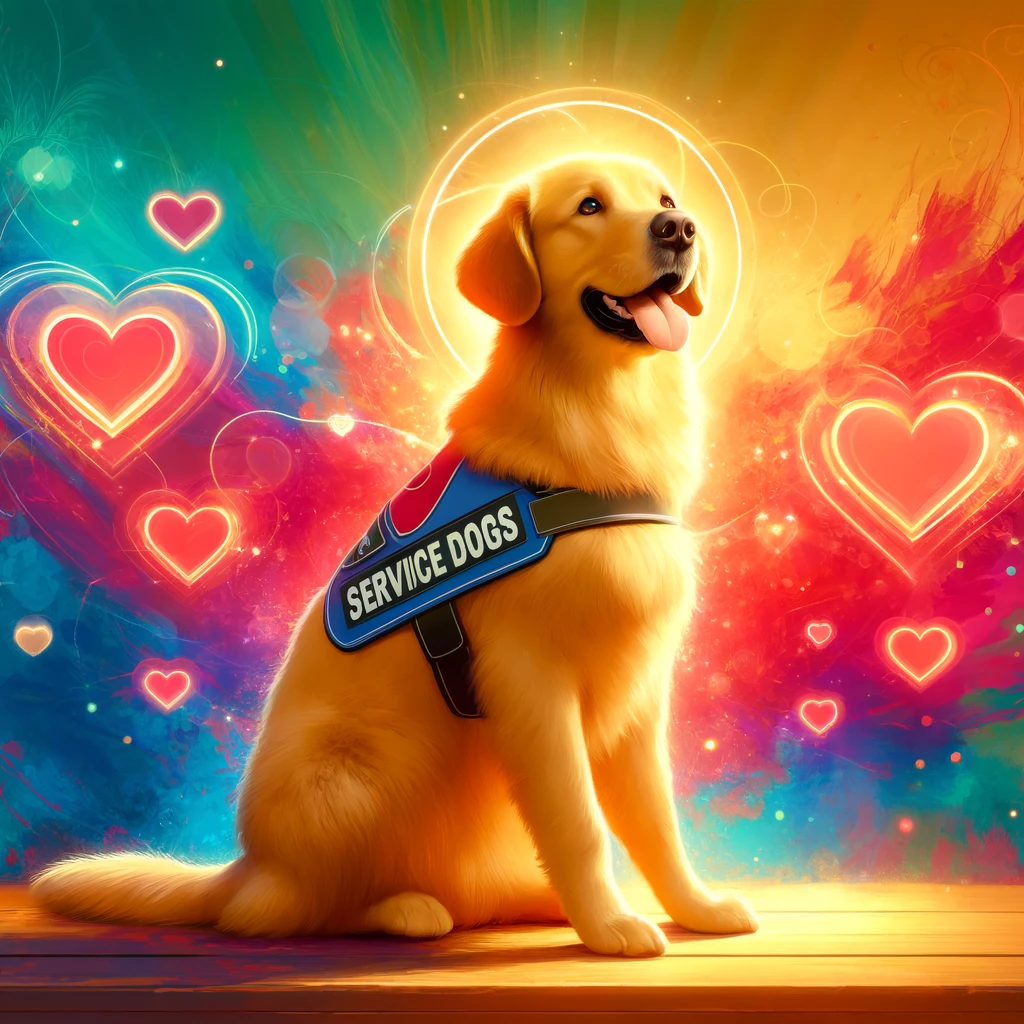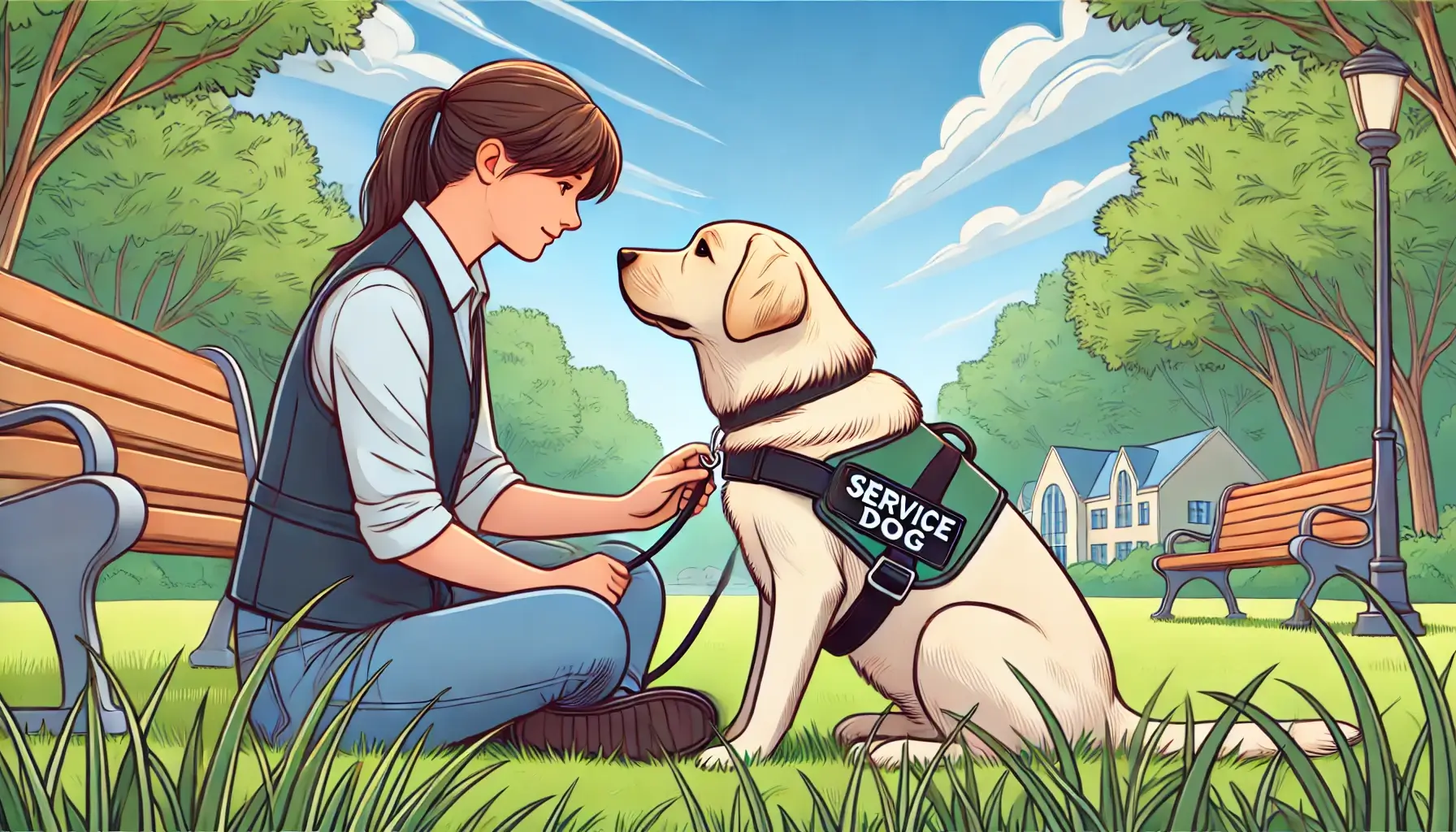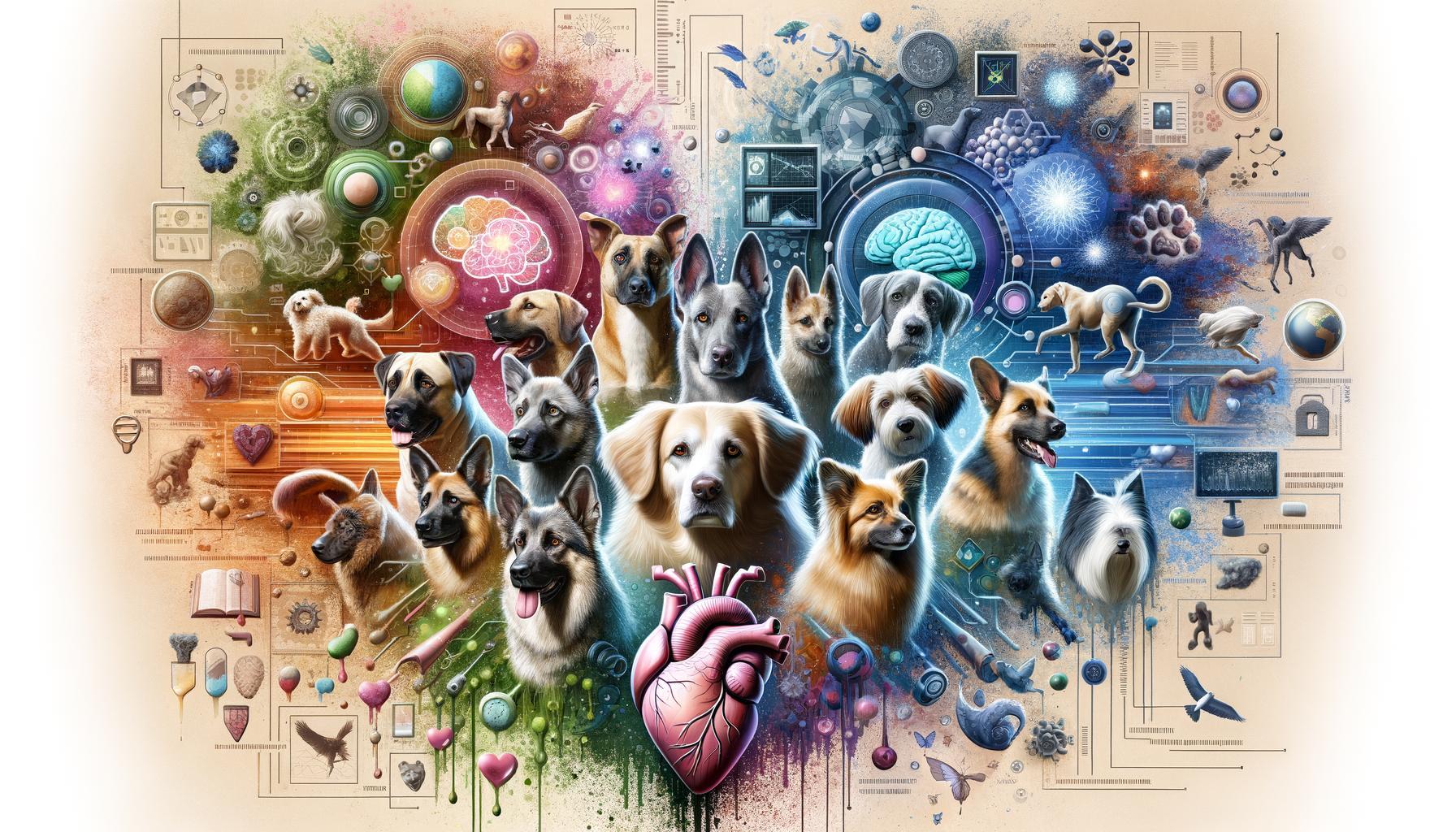Table of Contents
Introduction
If you’ve ever seen a dog of service in action, you know they’re nothing short of amazing. I remember the first time I witnessed a dog of service helping its handler navigate through a busy street. The dog’s focus and dedication were incredible, and it sparked my deep admiration for these incredible animals. Dogs of service are more than just pets; they are life-changers. Let’s dive into the heartwarming truth about these wonderful dogs and why they are so important in our lives.
What Are Dogs of Service?
Definition and Purpose
Dogs of service are specially trained to perform tasks for people with disabilities. These tasks range from guiding the visually impaired, alerting the deaf to sounds, pulling a wheelchair, alerting and protecting a person who is having a seizure, reminding a person with mental illness to take prescribed medications, and much more. Service animals provide essential support and independence to their handlers.
Types of Dogs of Service
There are several types of dogs of service, each trained to assist with specific needs:
- Guide Dogs: Help visually impaired or blind individuals navigate the world.
- Hearing Dogs: Alert deaf or hard-of-hearing individuals to important sounds.
- Mobility Assistance Dogs: Aid those with physical disabilities by performing tasks like opening doors or retrieving items.
- Medical Alert Dogs: Detect changes in their handler’s body that may indicate a medical emergency, such as a seizure or a drop in blood sugar levels.
- Psychiatric Service Dogs: Assist individuals with mental health conditions such as PTSD, anxiety, or depression by providing emotional support and performing specific tasks. These dogs can help mitigate symptoms and provide a sense of security.
Legal Rights and Protections
Dogs of service and their handlers are protected under various laws, such as the Americans with Disabilities Act (ADA) in the United States. These laws ensure that dogs of service are allowed in public places, including restaurants, hotels, and airplanes, to help their handlers live as independently as possible. It is crucial for the public to understand and respect the rights of service dog teams.
The Training Process
Rigorous Training Regimen
Training a dog of service is a rigorous process that typically starts when the dog is still a puppy and can take up to two years to complete. The training includes basic obedience, socialization, and specific tasks tailored to the handler’s needs. For example, guide dogs learn to navigate obstacles and stop at curbs, while medical alert dogs are trained to sense changes in body chemistry. Service dog training is intensive and requires consistent practice.
Key Skills and Tasks
Some of the incredible skills dogs of service learn include:
- Retrieving items: From a dropped pen to a phone.
- Opening and closing doors: Using specially designed handles.
- Providing balance support: Helping handlers walk or stand.
- Alerting to sounds: Such as a smoke alarm or doorbell.
- Interrupting harmful behaviors: In cases of PTSD or panic attacks. These tasks help maintain the handler’s safety and well-being.
The Human-Canine Bond
Emotional Connection
The bond between a dog of service and their handler is profound. This connection goes beyond the functional tasks the dog performs; it is built on trust, companionship, and mutual dependence. I remember talking to a veteran who had a PTSD dog of service. He described his dog as his “lifeline,” someone who brought him back from the brink during his darkest moments. This emotional bond is a cornerstone of their partnership.
Enhancing Quality of Life
This bond significantly enhances the quality of life for both the dog and the handler. Handlers often report feeling more confident, secure, and socially connected thanks to their dogs of service. The dogs, in turn, thrive on the sense of purpose and the strong bond they share with their humans. Assistance dogs play a crucial role in improving their handlers’ daily lives.
Benefits of Dogs of Service
Physical Benefits
Dogs of service provide invaluable physical assistance. For someone with mobility issues, a dog of service can help with tasks like opening doors, fetching items, or providing stability while walking. This level of assistance can drastically improve the handler’s independence and quality of life. Service animals are essential for those with physical limitations.
Emotional and Psychological Benefits
The emotional support provided by dogs of service is equally vital. These dogs offer companionship, reduce feelings of isolation, and help manage conditions like anxiety and depression. One handler shared with me how her psychiatric dog of service senses her anxiety attacks before they fully develop and interrupts them, allowing her to remain calm and functional. The presence of service animals can be a powerful therapeutic tool.
Social Benefits
Dogs of service also help break down social barriers. They can make it easier for their handlers to interact with others, fostering social connections and reducing stigma around disabilities. Watching a dog of service work often sparks conversations and educates the public about the abilities and rights of people with disabilities. These interactions can promote understanding and acceptance.
Challenges Faced by Dogs of Service and Their Handlers
Common Misconceptions
Despite their importance, dogs of service and their handlers often face misconceptions. Some people might think a dog of service is just a regular pet, or they might not understand why the dog is allowed in places where pets usually aren’t. It’s crucial to educate the public about the role of dogs of service and their legal protections. Addressing these misconceptions is vital for creating a supportive environment.
Public Access Issues
Handlers sometimes face challenges when trying to access public places. Despite legal protections, they might be questioned or even denied entry. It’s important for businesses and the public to understand and respect the rights of dogs of service teams. Raising awareness about these issues can help prevent unnecessary conflicts.
Emotional and Physical Demands
Dogs of service also face demands that can be both emotional and physical. These dogs work hard and need regular breaks, exercise, and mental stimulation to stay healthy and happy. Handlers must be attentive to their dogs’ needs to ensure their well-being. Service animals require ongoing care and attention to maintain their effectiveness.
The Journey of a Dog of Service
From Puppyhood to Retirement
The journey of a dog of service is a long and rewarding one. It begins with early training and socialization, often with a volunteer puppy raiser. Once the dog is old enough, they move on to more specialized training before being matched with a handler. A dog of service’s career can last 8-10 years, after which they often enjoy a well-deserved retirement. The transition to retirement is an important phase in their lives.
Organizations and Individuals Involved
Many dedicated organizations and individuals are involved in training and placing dogs of service. These include non-profits, trainers, and volunteers who raise puppies and provide ongoing support to handlers. Their work is crucial in ensuring that dogs of service are well-trained and properly matched with their handlers. The collaboration of these groups is essential for the success of service dog programs.
Life After Service
When a dog of service retires, they typically continue to live with their handler or move to a loving home. Their retirement is a time to relax and enjoy a more laid-back life after years of dedicated service. Retired service animals still bring joy and companionship to their families.
How You Can Support Dogs of Service and Their Handlers
Supporting Organizations
You can support dogs of service organizations by donating, volunteering, or advocating for their cause. These organizations rely on public support to continue their important work. Your contributions can make a significant difference in the lives of service animals and their handlers.
Appropriate Interaction
When you encounter a dog of service team in public, remember to interact appropriately. Do not distract the dog while it’s working, and always ask the handler before approaching or petting the dog. Respecting their space ensures the service animal can perform its duties effectively.
Raising Awareness
You can also help by raising awareness about the importance of dogs of service. Share stories, educate others about their rights and roles, and support policies that protect dogs of service teams. Spreading knowledge can lead to a more inclusive society.
Conclusion
Dogs of service are more than just helpers; they are life-changers. They provide physical assistance, emotional support, and a bridge to social interaction. The heartwarming truth is that these dogs make a profound difference in the lives of their handlers. By understanding, supporting, and respecting dogs of service and their handlers, we can all contribute to a more inclusive and compassionate society.
Have you ever had an experience with a dog of service? Share your stories or thoughts in the comments below. Help spread awareness by sharing this article with your friends and family. If you want to learn more or support the cause, consider donating to reputable dogs of service organizations.
Additional Resources
For those interested in learning more, here are some recommended books and websites:
- “Until Tuesday: A Wounded Warrior and the Golden Retriever Who Saved Him” by Luis Carlos Montalván
- Assistance Dogs International (ADI) website
- Guide Dogs for the Blind website






Leave a Reply